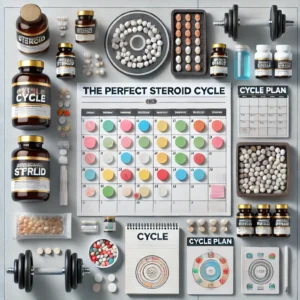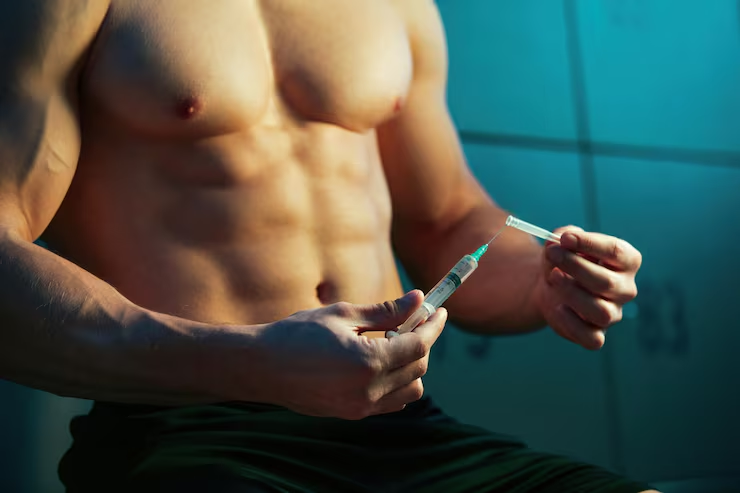Anabolic steroids are synthetic derivatives of testosterone, a hormone that plays a critical role in muscle growth, strength, and overall male physical development. In the world of fitness, sports, and bodybuilding, steroids are often used to enhance performance and achieve a more muscular physique. But how do these compounds work at the biological level, and what are their effects on the human body? Understanding the science behind steroids reveals their benefits, risks, and the reasons why they remain controversial in both athletic and medical communities.
What Are Steroids?
Steroids are a class of organic compounds with a characteristic molecular structure. They are categorized into two main types:
- Corticosteroids: Used medically to reduce inflammation and suppress the immune system.
- Anabolic-Androgenic Steroids (AAS): Synthetic hormones designed to mimic the effects of testosterone. These are the steroids most commonly associated with performance enhancement.
How Do Anabolic Steroids Work?
Anabolic steroids exert their effects by binding to androgen receptors in cells throughout the body. Here’s a step-by-step look at how they work:
1. Testosterone Mimicry
Anabolic steroids are chemically similar to testosterone, the hormone that drives muscle growth and repair. When introduced into the body, they:
- Increase protein synthesis in muscle cells.
- Stimulate the retention of nitrogen, a key component of muscle tissue.
2. Enhanced Protein Synthesis
Steroids accelerate the process by which cells produce proteins, the building blocks of muscle. This leads to:
- Faster recovery after workouts.
- Greater muscle mass and strength.
3. Inhibition of Catabolism
Steroids reduce the breakdown of muscle tissue (catabolism) by suppressing cortisol, a stress hormone that can degrade muscle.
4. Stimulation of Red Blood Cell Production
Anabolic steroids increase the production of red blood cells, improving oxygen delivery to muscles. This enhances endurance and reduces fatigue during physical activity.
5. Androgenic Effects
Apart from muscle-building (anabolic) effects, steroids also produce androgenic effects, which include the development of male characteristics such as deeper voice, facial hair, and increased libido.
Effects of Steroids on the Body
While anabolic steroids can produce significant benefits, their effects on the body go beyond just muscle growth. These effects can be broadly categorized into positive outcomes and potential risks.
Positive Effects
- Muscle Growth and Strength:
Steroids significantly enhance muscle mass and strength, particularly when combined with intense training and proper nutrition. - Improved Recovery:
Faster recovery times allow users to train harder and more frequently. - Increased Bone Density:
Steroids stimulate bone growth, making them useful in treating conditions like osteoporosis. - Enhanced Athletic Performance:
By improving endurance, strength, and recovery, steroids provide a competitive edge in sports.
Negative Effects
Despite these benefits, the risks of steroid use often outweigh the rewards. Prolonged or improper use can lead to severe health issues:
- Hormonal Imbalances:
- Testosterone Suppression: The body’s natural testosterone production decreases, potentially leading to hypogonadism (low testosterone).
- Gynecomastia: Elevated estrogen levels can cause the development of breast tissue in men.
- Liver Damage:
Oral steroids, in particular, are hepatotoxic and can cause liver strain or failure. - Cardiovascular Risks:
- Increased LDL (“bad”) cholesterol and decreased HDL (“good”) cholesterol.
- Elevated blood pressure.
- Higher risk of heart attack and stroke.
- Psychological Effects:
- Mood swings, aggression (“roid rage”), and anxiety.
- Long-term use may contribute to depression and dependence.
- Reproductive Issues:
- Reduced sperm production and infertility in men.
- Menstrual irregularities and reduced fertility in women.
- Physical Side Effects:
- Acne, hair loss, and increased body hair in both sexes.
- Voice deepening and clitoral enlargement in women.
Medical Uses of Steroids
Anabolic steroids are not solely used for performance enhancement. They have legitimate medical applications, including:
- Treatment of Muscle Wasting Diseases: Conditions like HIV/AIDS or cancer cachexia.
- Delayed Puberty: To induce puberty in males with developmental delays.
- Anemia: By stimulating red blood cell production.
- Osteoporosis: Improving bone density.
In these cases, steroids are prescribed and monitored by medical professionals to ensure safety and efficacy.
Steroid Abuse and Dependency
The misuse of steroids in non-medical settings often involves doses far exceeding therapeutic recommendations. Over time, this can lead to dependency, characterized by:
- A psychological reliance on steroids to maintain performance or appearance.
- Withdrawal symptoms, such as fatigue, mood swings, and loss of muscle mass when stopping use.
Long-Term Effects of Steroid Use
The long-term consequences of steroid use can be severe and often irreversible. These include:
- Chronic Heart Disease: Prolonged cardiovascular strain can lead to permanent damage.
- Liver Failure: Persistent liver toxicity from oral steroids.
- Permanent Hormonal Imbalances: In some cases, the body fails to resume normal testosterone production even after discontinuing steroids.
Alternatives to Steroid Use
For individuals seeking performance and aesthetic benefits without the risks of anabolic steroids, safer alternatives include:
- Natural Supplements: Creatine, whey protein, and branched-chain amino acids (BCAAs).
- Optimized Training Programs: Progressive overload and periodization techniques.
- Balanced Nutrition: High-protein diets and adequate caloric intake support muscle growth naturally.
The Importance of Informed Decision-Making
Understanding how steroids work and their effects on the body is essential for making informed choices. While the short-term benefits can be tempting, the long-term risks often outweigh the rewards. For those considering steroids, consulting with a healthcare professional and thoroughly weighing the pros and cons is crucial.
For individuals who have used steroids and wish to recover, post-cycle therapy (PCT) and lifestyle changes can help restore hormonal balance and minimize lasting damage.
Conclusion
The science behind steroids reveals their powerful effects on the human body, from muscle growth and recovery to significant health risks. While they offer undeniable benefits in certain medical contexts, their misuse in fitness and sports often leads to serious consequences. By understanding how steroids work and their potential impact, individuals can make safer, more responsible choices about their health and fitness journeys. True strength and success lie in sustainable practices, not shortcuts that compromise long-term well-being.
Join in on the discussion by clicking here to go to our forums
References:
Bhasin, S., Storer, T. W., Berman, N., Callegari, C., Clevenger, B., Phillips, J., … & Casaburi, R. (1996). The effects of supraphysiologic doses of testosterone on muscle size and strength in normal men. The New England Journal of Medicine, 335(1), 1–7. https://doi.org/10.1056/NEJM199607043350101
Kicman, A. T. (2008). Pharmacology of anabolic steroids. British Journal of Pharmacology, 154(3), 502–521. https://doi.org/10.1038/bjp.2008.165
Pope, H. G., Wood, R. I., Rogol, A., Nyberg, F., Bowers, L., & Bhasin, S. (2014). Adverse health consequences of performance-enhancing drugs: An Endocrine Society scientific statement. Endocrine Reviews, 35(3), 341–375. https://doi.org/10.1210/er.2013-1058
Hartgens, F., & Kuipers, H. (2004). Effects of androgenic-anabolic steroids in athletes. Sports Medicine, 34(8), 513–554. https://doi.org/10.2165/00007256-200434080-00003
Kanayama, G., Hudson, J. I., & Pope, H. G. Jr. (2008). Long-term psychiatric and medical consequences of anabolic–androgenic steroid abuse: A looming public health concern? Drug and Alcohol Dependence, 98(1–2), 1–12. https://doi.org/10.1016/j.drugalcdep.2008.05.004
Evans, N. A. (2004). Current concepts in anabolic-androgenic steroids. The American Journal of Sports Medicine, 32(2), 534–542. https://doi.org/10.1177/0363546503262202
Basaria, S. (2010). Androgen abuse in athletes: Detection and consequences. The Journal of Clinical Endocrinology & Metabolism, 95(4), 1533–1543. https://doi.org/10.1210/jc.2009-1579







